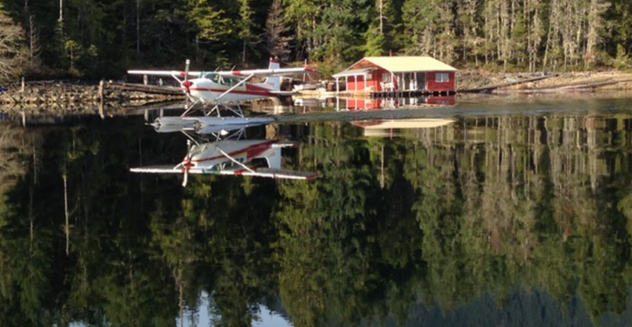by Bryan Webster, Aviation Egress Systems
Summer is in the air and with any hope the COVID pandemic we have all been subjected to is now at least under control or mostly in the rear-view mirror. Aviation is unfortunately still facing many challenges, which are being dealt with on a regular basis by both private and commercial operators as regulations change daily.
Aviation Egress Training was all but shut down in March 2020 due to pool facility and health protocols; thus, we elected to ride out the storm in a number of different ways.
Like many businesses negatively affected by the pandemic, we had few calls, so catching up on missed inquiries took a matter of minutes once we were back in the office. As fall weather set in at AES (Aviation Egress Systems) we had an opportunity not normally afforded to us regarding time, allowing for new ideas to formulate and turn into reality. With that being said, we have been working diligently on updating our Dry Egress Training as newer technologies pertaining to our original site (now five years old) required maintenance upgrades.
Fresh and up-to-date information is important to any online service and will be available shortly with exciting new graphics and technologies on the Egress training website.
This improvement also allows AES Dry Egress to be more acceptable to commercial seaplane pilots regarding their ground school when Egress Training mandated training takes place in less than a year on February 23, 2022. Once COVID rules relax, AES will be more available for Wet Egress Training across Canada, insuring all health regulations are complied with, including a specifically designed neoprene in-water mask.
Since 1998, AES has pioneered egress training with well over 6 000 students ready to deal with any water emergencies. Personally, I have witnessed numerous situations regarding student behaviours in our pool equipment at 63 locations, from Inuvik to Quebec and everywhere in between. From those observations, AES has been working diligently on a number of innovative seaplane safety products that will be announced once testing has been completed.
As well, Pitt Meadows B.C. Airport has teamed up with Airworthiness Resources, using their time wisely to design a Cessna 206 rear cargo door modification. For over 50 years, Cessna engineers, plus numerous other agencies, had attempted to solve the issue without success. Today, thanks to their dedication to safety, an STC’d door kit is available that allows for easy exit out the once near impassable configuration with flaps down. For further information, check out Coast Dog Aviation Ltd website.
With summer arriving shortly and all of those previously ice-covered lakes opening up, it’s a great time to practise a few takeoffs and landings to become reacquainted with your aircraft. I suggest this to all pilots previous to loading up friends and family for their first flight since a winter of aviation inactivity.
If possible, practise a few of the many environmental seaplane challenges such as water conditions like rough, windy or calm. Glassy water, for example, is also well known to require a great deal of concentration and demands the utmost respect, requiring advanced skills—even the most experienced of pilots take it very seriously. In the event any pilots are not well prepared or taught how to handle this condition, the mirror-like illusion creates a sense of landing well above or below the actual surface. The consequences for error can be, and have been, in many seaplane accidents, catastrophic, proven by the well documented statistics over the years. It is highly suggested seaplane pilots who have not practised the proper method to set up for and land in this condition seek out an experienced individual before attempting it on their own.
For amphibious pilots, a colour-coded checklist with blue for water can be an important part of ensuring your landing gear is in the appropriate position for both landing and taking off. Landing with gear in the inappropriate position could be expensive on land or possibly life-threatening with wheels down in water.
Another common mistake for seaplane pilots is not realizing a missing float ball or plug may allow for rapid overloading of any float compartment with water during taxi or takeoff. A few have found out the hard way at night tied to a dock that wave action alone is capable of flooding unplugged compartments, which may cause the aircraft to submerge. Leaky floats within reason are one thing that may be dealt with until repairs are performed by pumping out excess water as required. Understand though, that in the event an aircraft float is damaged or unsealed and large amounts of water enter, for any floatation chamber weighing 10 pounds per gallon (or 4.5 litres), instability takes place. Once the aircraft gets airborne, there could be a sudden change in performance or worse, making it difficult to control. Float flying gives aviators the ability to enjoy wonderful far-off places where there is often little support in the event of an accident, so always remain proficient and ready for anything Mother Nature throws at you.
For commercial seaplane operators, be advised that new PFD (personal flotation devices) regulations will be in effect as of June 6, 2021. No doubt all affected companies have been made aware of the changes, although further information may be found on the TC Web site.
Pilots flying wheel-equipped aircraft departing from many of our airports located next to lakes or oceans should also at least consider their emergency ditching procedures in advance. The reason is low wing versus high; fixed gear or retractable configurations all have different procedures should a water landing be inevitable.
Remember, pilots have responsibilities to safeguard their passengers and equipment, which is why any training should be considered invaluable in the event an unforeseen situation arises.
With that being said, it may be time to review your POH in advance in order to remain up to date should you need to draw from those memory items.
